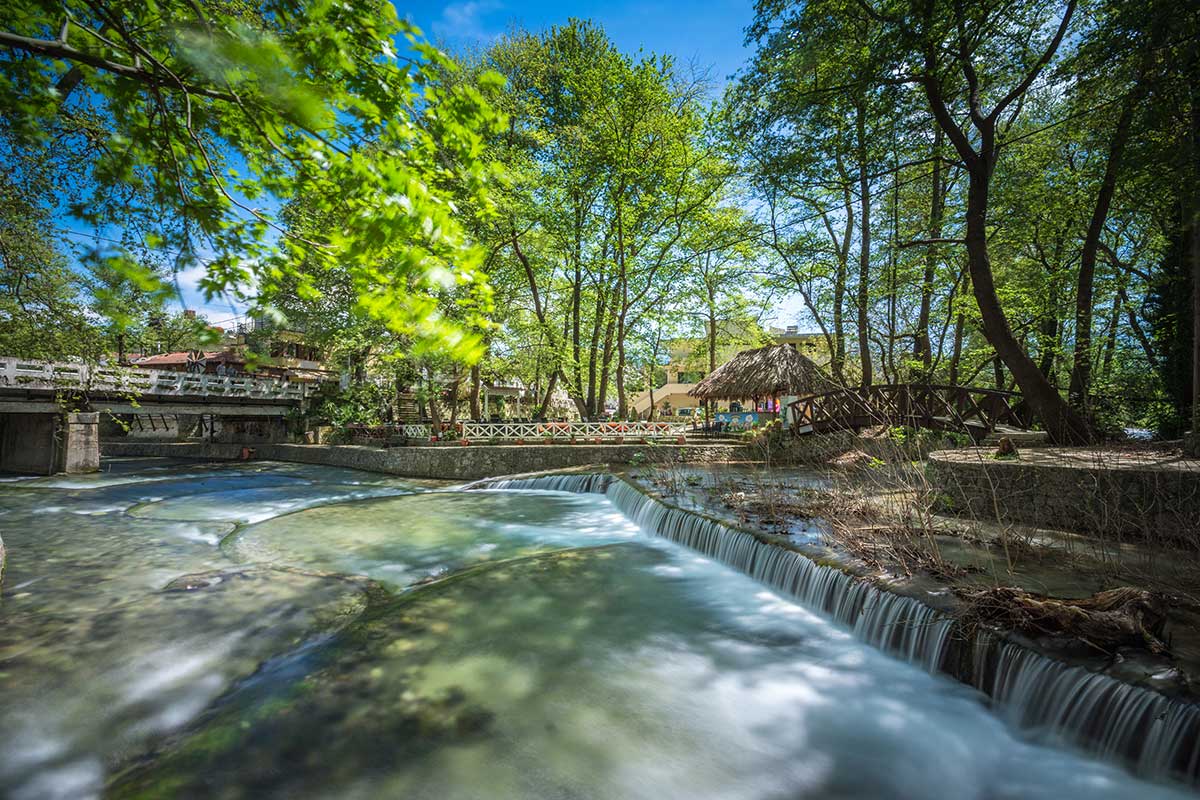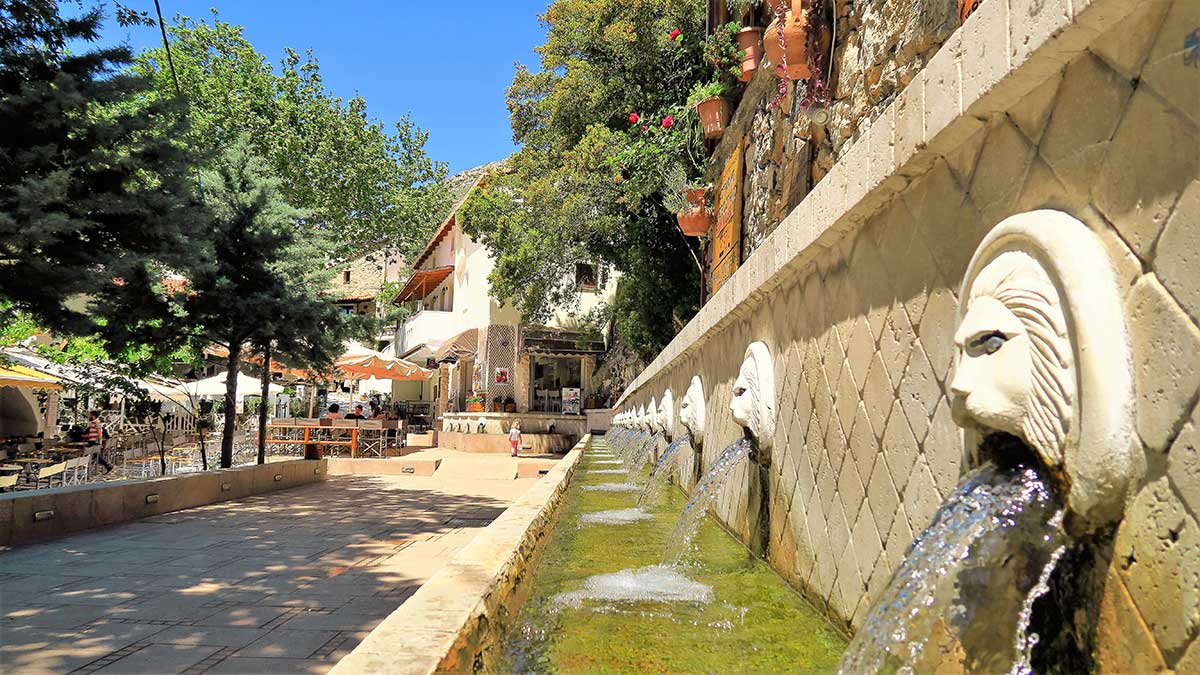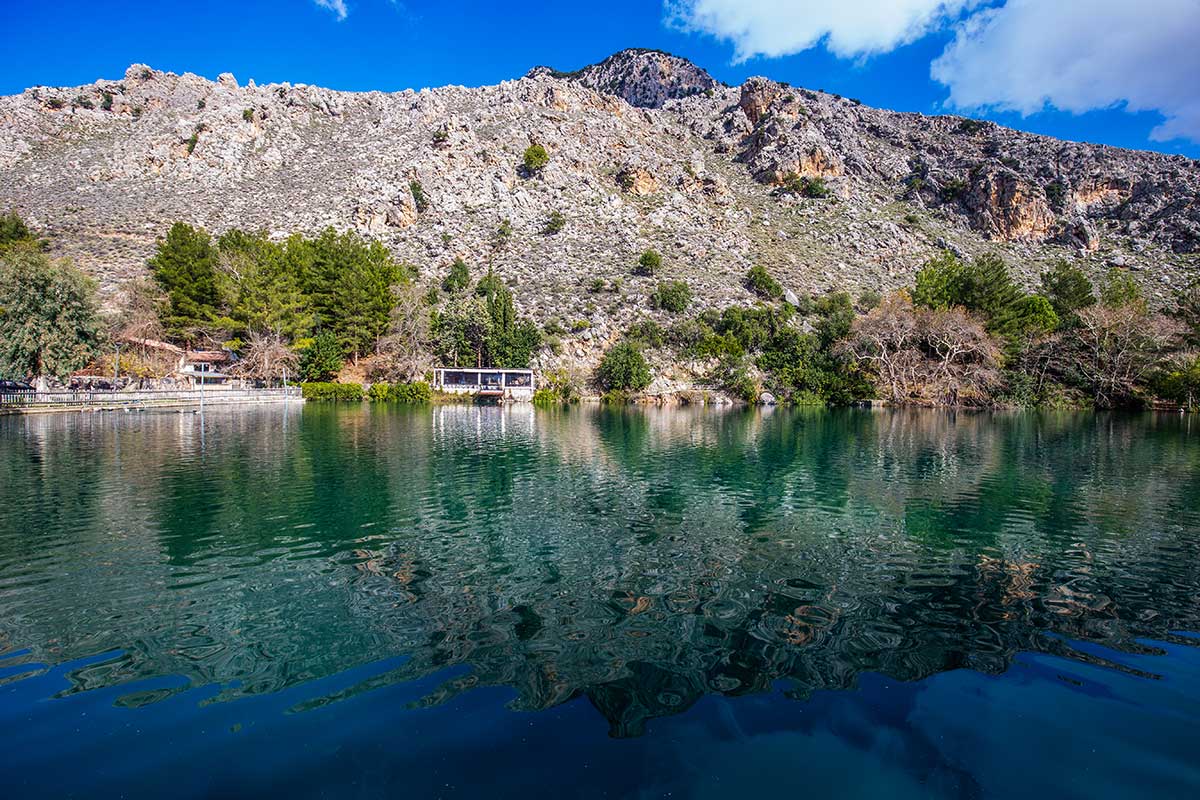Your next best Cretan experience will be beautifully local when you explore one of the traditional villages at the throbbing heart of the island. These settlements combine tradition and authenticity with the locals’ deep respect for nature and its bounty.
Leave the popular tourist trails behind you and discover the heart of Crete through genuine experiences there, where you will find narrow country roads leading to villages steeped in history and spellbinding natural splendor.
Zaros (Heraklion)
Zaros lays among verdant olive grows some 340 meters above sea level at the foothills of Crete’s iconic Mount Psiloritis. It is 46 kilometers southwest of Heraklion in an area known for its natural mineral water springs. The village’s very name, “Zaros,” translates loosely as the place where the water flows.
Many times when you sit down to dine in a Cretan taverna, the server will welcome you with a bottle of cold Zaros mineral water. If you want to know where the water comes from, the village of Zaros is your destination. The water you drink comes from Amati, the only natural mineral water source on the island, bottled by the ZAROS S.A factory, which has its headquarters just outside the village. Most of the employees of this factory are inhabitants of Zaros. Drinking and buying Zaros mineral water supports the local economy.
Zaros is worth seeing because it is a traditional mountain village in a setting of inspiring natural beauty. Its main attraction is an artificial lake, Zaros (or Votomos), one kilometer north of the settlement. Until 1987 this area was a wetland around the Votomos spring, which now fills the lake. Drive to the lake and sit down at one of the tavernas there: they serve fresh trout, which abounds in its waters, which are so clear that you can see the fish swimming around.
If you are into nature hikes, the lake is the starting point of a trekking route that passes through the Rouvas Gorge leading to the Rouvas Forest.
In the village, you can visit the Folklore and Geological Museum of Zaros, which occupies a traditional Cretan house and exhibits artifacts that convey the locals’ traditional lifestyle. Some of these items belong to the past, and others are still in everyday use in rural Cretan households.
Vrysses (Apokoronas – Chania)

Vrysses (sometimes spelled Vrisses or Vryses) has genuine tourist appeal. It is modern compared to other Cretan villages, and proximity to Chania town makes it easily accessible by bus or by car. Besides convenience, Vrysses is attractive in high season due to its abundant vegetation providing a pleasant and refreshing escape from the summer’s heat.
Two rivers merge right at the heart of the village: Boutakas and Vrysianos. Boutakas flows into the sea on the Kalyvaki beach in Georgioupolis. You can spend a delightful afternoon in Vrysses at a taverna by the river, sipping cold beer and sampling light Greek mezedes before adventuring either on a hike in one of the gorges nearby or to the beach in Georgioupolis (fifteen minutes by car).
While in Vrysses, see the Hellenistic era bridge, Elliniki Kamara. As it stands today, the bridge has some modifications from the Venetians and Ottomans. Although its condition is not exceptional, it still makes for some surprising snapshots if you are into photography. Several legends surround this historical landmark: fairies would appear dancing here on New Year’s Eve, according to some stories, while a folk song tells of the sacrifice of the wife of the foreman at the foundations of the bridge for this to stand.
Some four kilometers drive from Vrysses, in Alikampos, you can visit the Dourakis Winery, where you can stay for a picnic in the vineyard, book a winery tour, taste the wines, or even attend a cooking class.
Spili (Rethymno)

Spili is about thirty kilometers southeast of Rethymno at an altitude of 430 meters above sea level. It lies at the foothills of Mount Vorizis in a verdant valley irrigated by the rippling waters of a river flowing south of the village. A dense population of trout thrives in this river.
Twenty-five lions guard the two plane trees at the heart of Spili: these are twenty-five Venetian fountains delivering the mineral water of the Kefalovrisi spring. You shouldn’t leave this lovely village without tasting it. Sit down for a snack or lunch at one of the tavernas offering refreshments at the shade of the village center’s plane trees. You can pair your meal with a cold beer, mineral water, or table wine. And sure, Crete is not Crete without its ice-cold raki that accompanies seasonal fruit or homemade desserts, depending on what the kitchen has fresh that day.
The Folk Museum of Spili occupies a traditional two-story Cretan house and showcases the farmers’ lifestyle who lived in the area yesteryear. Many household items – like kitchen utensils, carpets, rugs, throws, and other fabrics – on display are still used in Cretan homes today.
Hikers use Spili as a starting point for treks in the nearby Gious Kambos Plateau and Agia Fotia Gorge, just one kilometer east of the village. When you walk along the spring in the gorge in the shade of leafy plane trees, you will see several waterfalls, which are particularly beautiful in the spring, when the ice from the mountains melts, supplying the spring with large quantities of water.
For those who want a few moments of peaceful contemplation, the Saint Raphael Monastery at Spili is a welcoming spot. In use since 1990, the complex has a central church dedicated to St. Raphael, St. Nikolaos, and St. Irini and several chapels dedicated to St. Irenaeus, St. John the Baptist, St. John the Hermit, and Archangel Michael.
Another lesser-known attraction of Spili is the Maravel Garden. About 300 different species of medicinal herbs grow here among flowering trees and perennial plants. After a few minutes of taking in the fragrant air of the garden, you can stop by their souvenir shop to buy Cretan herbs, essential oils, healing balms, soaps, and many other products based on the bounty of the gardens.
Crete has many other fascinating villages you can visit during your stay. Sometimes, you should simply go for a ride and exit the highway wherever the country roads lead you.
